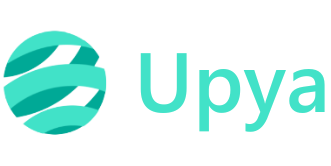The gathering sparked great conversations between distributors, manufacturers, investors, the World Bank and other non-profit organizations. Upya was there too, and these are our key takeaways.
The SHS PAYGO model
For more than a decade now PAYGO has served as a mechanism to give rural populations in Africa access to electricity through Solar Home Systems (SHS). The latter has had its share of successes and failures; the consensus is that it is a tough business and by itself, even though beneficial to millions, PAYGO SHS cannot bridge the electrification gap fast enough.
In Amsterdam, members also discussed in detail real collection rates (60-65%) vs desired collection rates (+80%) which are critical to building sustainable businesses that can deliver quality products and service to underserved communities in the long run.
At Upya, we do see customers that have succeeded in this and built amazing businesses around PAYGO SHS. If we are to summarize why they are successful two main characteristics come out:
1. Focus: Start simple with a clear offering, confirm you control the offering (E.g collection rates) and then scale and diversify
2. Processes: Build the necessary organizational structure, discipline and processes to allow yourself control operations while staying lean, at scale. Check Upya’s Workflow Automation feature.
Government involvement
Why does Decentralized Rural Electrification (DRE) exist? Because governments and their national grids are not reaching the last mile. Cost is prohibitive and even urban or peri urban infrastructure is failing. Yet, access to electricity is a fundamental right and is necessary for the economic and social development of every country.
And so, the private sector (like SHS distributors and minigrids developers) are filling the gap. However, GOGLA members do feel that government support to their activities, that require subsidies, is lacking. Public to private partnerships need to increase and more conversations with governments need to take place. For example, members asked for governments to be part of GOGLA meetings and/or the forum happening in October.
Energy-as-a-Service
Last December, MOON, Easysolar and SolarAid published a paper on a new model called Energy-as-a-Service. The latter was also discussed during the GOGLA meeting as a potentially new model to speed things up and reach ALL rural populations. Energy-as-a-Service also distributes SHS type products, but with a different model that reduces costs to the end-customer and accelerates operational deployment.
A key component is donor and government related (hence the above); it will require upfront investments moving the role of distributors to be purely operational with a clear mission: deploy to all as fast as possible. Early signs are promising and members are looking forward to hearing more during the GOGLA forum.
In few words:
It is clear that GOGLA and its members are working hard to solve for universal electrification while building sustainable businesses and bringing new ideas on the table. It will take more than one model to reach everyone fast enough. PAYGO SHS, Minigrids, Energy-as-a-Service and new ideas that may come are all necessary to make this happen. As the World Bank stated back in April: “Connecting 250M people to electricity would open private sector investment opportunities worth $9Bn in distributed renewable energy (DRE) alone. Advocates say that DRE can be easily installed, is reliable and operates independently from national power grids, which makes it particularly useful in remote areas.”
